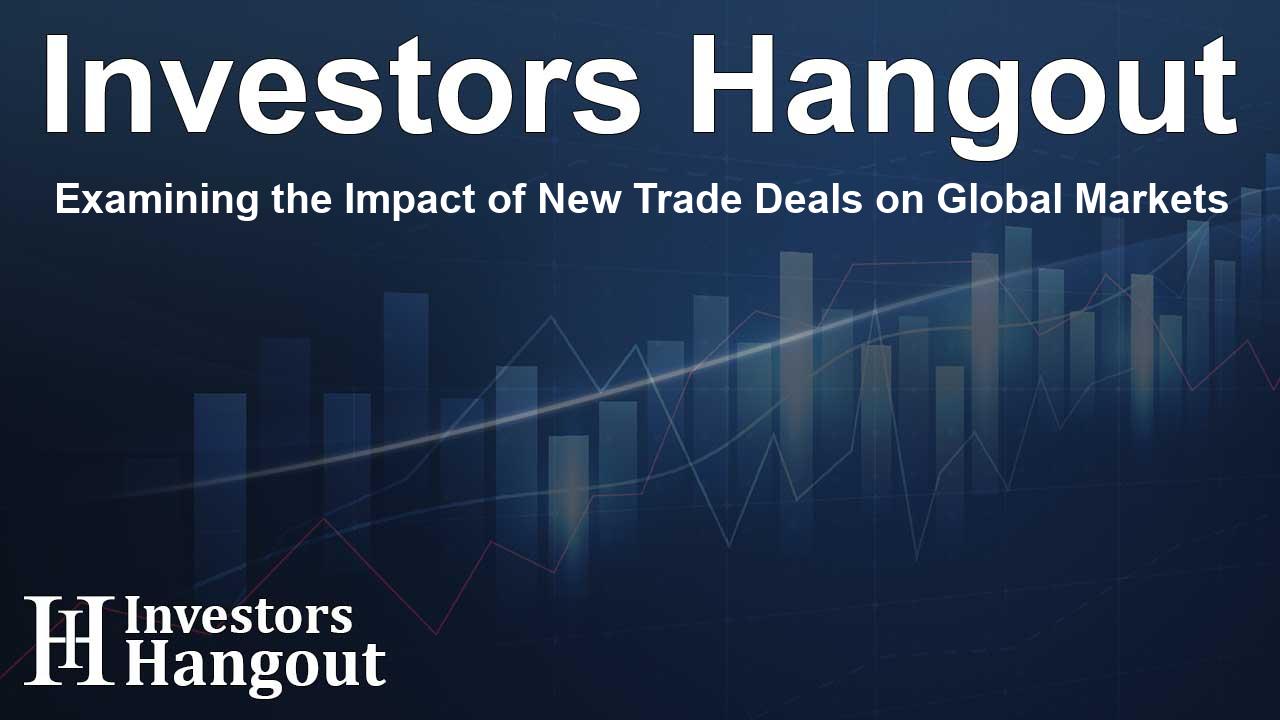Examining the Impact of New Trade Deals on Global Markets

Understanding the New Trade Agreement with Japan
Japan and the United States have come together in a substantial trade agreement that lowers the previously threatened 25% tariffs on Japanese goods to a more manageable 15%. This agreement is not just about the reduction in tariff rates, but it also opens up Japanese markets to a wider range of U.S. products. One particularly notable aspect of this deal is Japan’s commitment to a hefty $550 billion investment fund to support the U.S. economy.
According to Scott Bessent, Japan has proposed a partnership where they will provide critical resources such as equity, credit guarantees, and funds aimed at major projects within the United States. This initiative is expected to introduce such capital which Bessent describes as “all new capital.” This phrasing indicates that these funds will be in addition to Japan’s existing investments in the U.S., alleviating fears that Japan might reduce its investment in U.S. Treasury bonds.
The influx of capital from Japan will effectively lower the financing costs for both government and private enterprises. More importantly, this financing deal could potentially serve as a model for future tariff negotiations with other countries. Could we see countries like China, the European Union, Mexico, and Canada stepping up to finance U.S. debts in exchange for more favorable tariff arrangements?
Market Reactions and Brand Performance
In wake of the tariff reduction, shares of Toyota (NYSE: TM) have seen a significant uptick, soaring by nearly 15%. The reduction to 15% has allowed Toyota to enhance its price competitiveness compared to European rivals that continue to contend with tariffs of 25% or more. This shift in the tariff landscape has a direct implication on market dynamics and the performance of major automotive brands.
Shifting Sentiment in Stock Markets
Looking closely at market trends, the current atmosphere surrounding the Nasdaq has raised questions about the sustainability of recent rallies. While a crash doesn't seem imminent, the rapid resurgence of “meme stocks” indicates a shift toward greater investor complacency. High-yield bond market data further reflects this complacency, revealing a noticeable drop in the spreads between high-yield bonds and “risk-free” assets such as Treasuries.
The ongoing low levels in bond spreads don't mean there’s an impending correction, but they do indicate that the market is currently riding high on a wave of optimism. Historical patterns suggest that such high levels of complacency are often followed by market corrections, creating a need for vigilance among investors.
The Speculative Landscape of Retail Stocks
On the speculative side, stocks like Kohl's (NYSE: KSS), GoPro (NASDAQ: GPRO), and Krispy Kreme (NASDAQ: DNUT) are experiencing wild price fluctuations. Recently, Kohl's stock surged significantly, largely attributed to retail trader enthusiasm. As with many meme stocks, KSS has seen some of its volatility stem from short interest, making it a target for speculative traders.
On Wednesday, GoPro and Krispy Kreme emerged in the spotlight, with shares skyrocketing 63% and 33%, respectively, in pre-market trading. Even as these stocks have seen an undeniable rally, one must keep in mind that they are still grappling with the realities of their business fundamentals, which remain unclear in the face of speculative trading.
Market Signals and Future Considerations
Investors should be mindful of the high levels of risk associated with such speculative gains. While the market might seem calm at present, indicators suggest that it’s imperative to continue monitoring both the volatility index and the credit markets. A notable aspect of the current market is that bond traders typically display the first signs of apprehension by seeking protection through credit default markets.
As of now, there’s little indication of market strain from the credit sector, which is providing a supportive backdrop for stock performance. However, this is likely to change, emphasizing the need for prudent trading strategies moving forward.
Frequently Asked Questions
What does the new trade agreement with Japan involve?
The agreement includes a reduction of tariffs from 25% to 15%, as well as a $550 billion investment fund from Japan aimed at supporting U.S. projects.
How have Toyota's shares been affected by the new tariffs?
Shares of Toyota surged by nearly 15%, improving their competitiveness against European competitors facing higher tariffs.
What indicators suggest a potential market correction?
High complacency levels in the bond market and historical patterns showing complacency preceding market corrections indicate the need for caution.
What is the current sentiment toward 'meme stocks'?
Meme stocks like Kohl's, GoPro, and Krispy Kreme are experiencing high volatility driven by speculative trading without substantial news support.
What should investors do amid current market conditions?
Investors should maintain vigilance, monitoring volatility indicators and gearing strategies towards managing risk while participating in the market.
About The Author
Contact Hannah Lewis privately here. Or send an email with ATTN: Hannah Lewis as the subject to contact@investorshangout.com.
About Investors Hangout
Investors Hangout is a leading online stock forum for financial discussion and learning, offering a wide range of free tools and resources. It draws in traders of all levels, who exchange market knowledge, investigate trading tactics, and keep an eye on industry developments in real time. Featuring financial articles, stock message boards, quotes, charts, company profiles, and live news updates. Through cooperative learning and a wealth of informational resources, it helps users from novices creating their first portfolios to experts honing their techniques. Join Investors Hangout today: https://investorshangout.com/
The content of this article is based on factual, publicly available information and does not represent legal, financial, or investment advice. Investors Hangout does not offer financial advice, and the author is not a licensed financial advisor. Consult a qualified advisor before making any financial or investment decisions based on this article. This article should not be considered advice to purchase, sell, or hold any securities or other investments. If any of the material provided here is inaccurate, please contact us for corrections.
